Dealing with customer complaints can be challenging, but it's also a great opportunity to show your commitment to service. A well-crafted response can turn a negative experience into a positive one, fostering loyalty and trust. In this article, we'll explore effective letter templates that not only address concerns but also leave the customer feeling valued. So, if you want to learn how to transform complaints into delightful resolutions, keep reading!
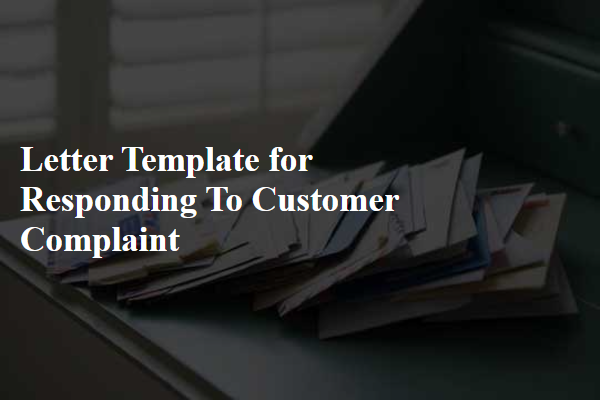
Empathy and Understanding
Experiencing customer complaints can drastically impact a business's reputation and customer relations. Acknowledging the customer's feelings and perspectives is crucial for repair and improvement. By actively listening and showing genuine empathy, businesses create a supportive atmosphere. Addressing the specific issues raised--like product defects or service delays--demonstrates understanding of the customer's frustration. Providing potential solutions or compensations, such as refunds or replacement products, emphasizes commitment to satisfaction. This approach not only resolves the immediate issue but cultivates long-term customer loyalty, strengthening the brand's image in the competitive marketplace.
Clear Acknowledgment
Acknowledging customer complaints is crucial for maintaining trust and satisfaction. For example, when a customer expresses dissatisfaction regarding service quality (poor meal experience at a restaurant), recognizing their concerns promptly (within 24 hours) is essential. Ensure that the acknowledgment is sincere, reflecting understanding and empathy for specific issues raised, such as long wait times. Additionally, provide assurance that their feedback will lead to improvements in service and customer experience. This approach not only addresses the concern but also fosters a sense of value and appreciation for the customer's input, ultimately enhancing their loyalty to the brand.
Resolution and Action Plan
Customer complaints can significantly impact brand reputation and loyalty. A well-structured resolution and action plan is critical in restoring customer satisfaction. Acknowledge the complaint promptly, ensuring the response is courteous and empathetic. For instance, if a customer experienced a delay in product delivery, identify the specific issue (e.g., shipping provider, logistic errors), provide a timeline for resolution (e.g., 5-7 business days), and offer potential compensatory measures (e.g., discounts, future credits). Communicate the steps taken to prevent recurrence such as revising shipping protocols or improving supplier communication. Collect feedback post-resolution to gauge satisfaction and build trust, reinforcing commitment to quality service. This structured approach can foster customer loyalty while transforming negative experiences into positive ones.
Apology and Reassurance
Apologizing for a customer complaint demonstrates acknowledgment of the issue and commitment to resolution. Affected products or services, such as delayed deliveries or faulty items, often lead to frustration. The customer expects a prompt response, which can include a sincere expression of regret over their negative experience. Offering reassurance about steps taken to rectify the situation, such as revising operational procedures or enhancing quality control, can help rebuild trust. Lastly, providing contact information for further assistance emphasizes your dedication to customer satisfaction and retention.
Contact Information and Follow-Up
In addressing customer complaints effectively, it's crucial to incorporate comprehensive contact information for seamless follow-up. Providing a direct telephone number (for example, a dedicated support line available weekdays from 9 AM to 5 PM) enhances accessibility. Email addresses (such as support@company.com) allows for documented communication, increasing clarity. Customer service representatives can be designated specific case numbers (for instance, case ID 123456) to track resolution progress. Inviting customers to follow up within a specified timeframe (like 48 hours) ensures prompt responses. Utilizing social media channels (for example, Twitter handle @companysupport) can also facilitate rapid exchanges, fostering a sense of connection and trust. Ultimately, these details enable a more organized response strategy, demonstrating commitment to customer satisfaction.

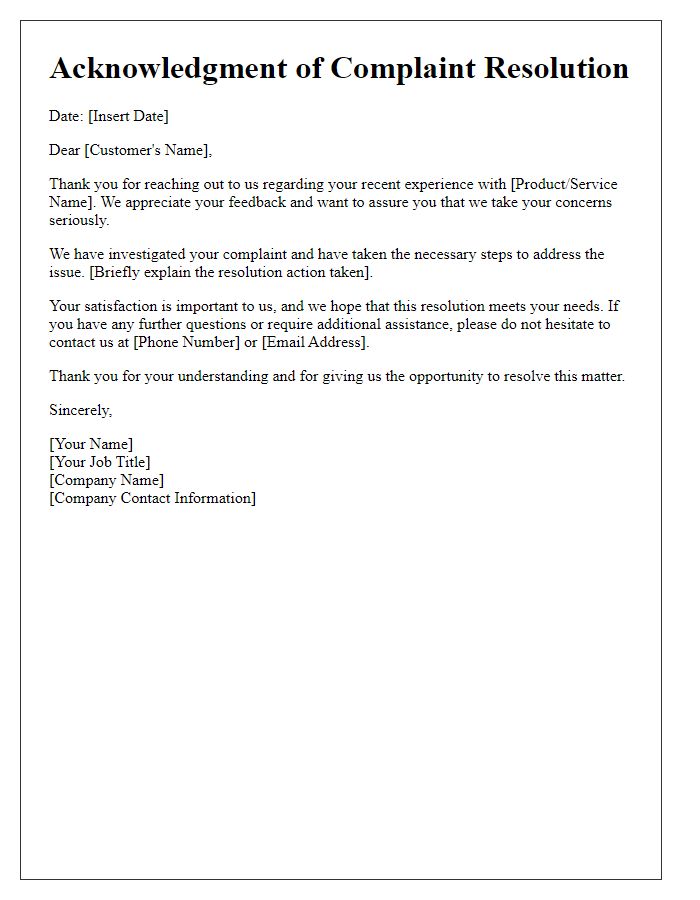
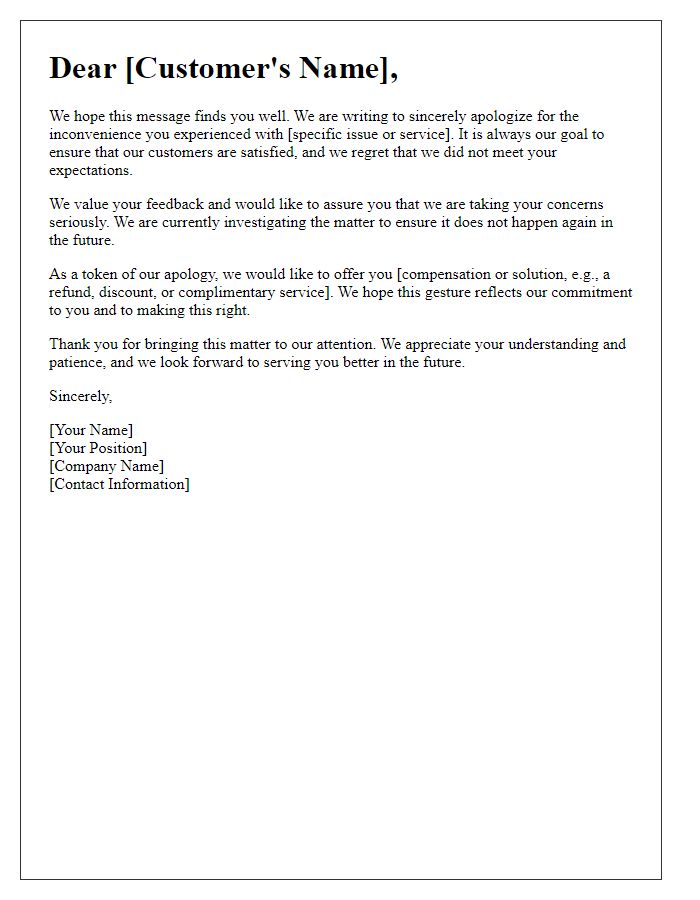
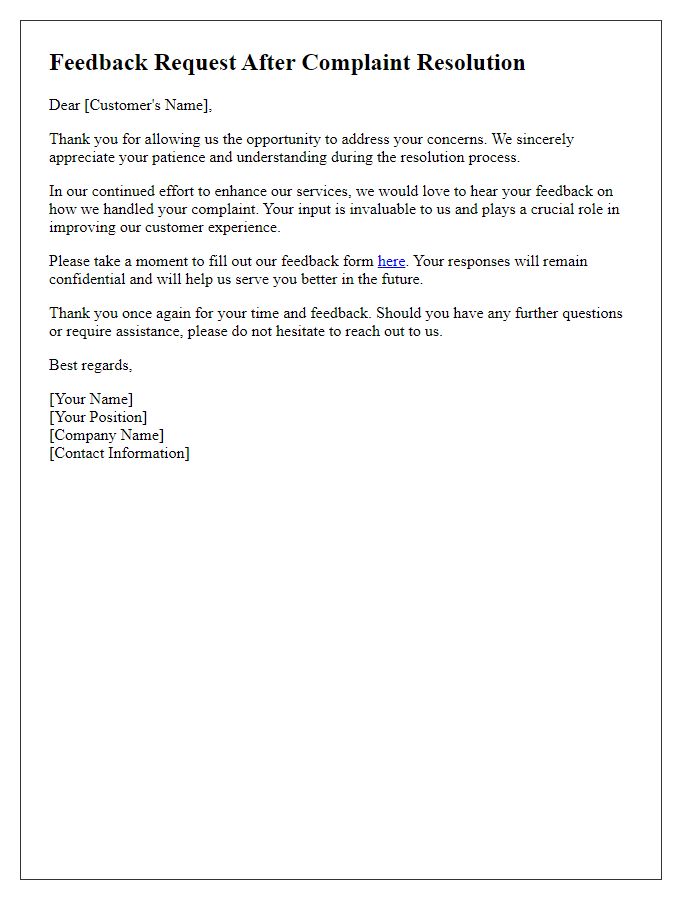
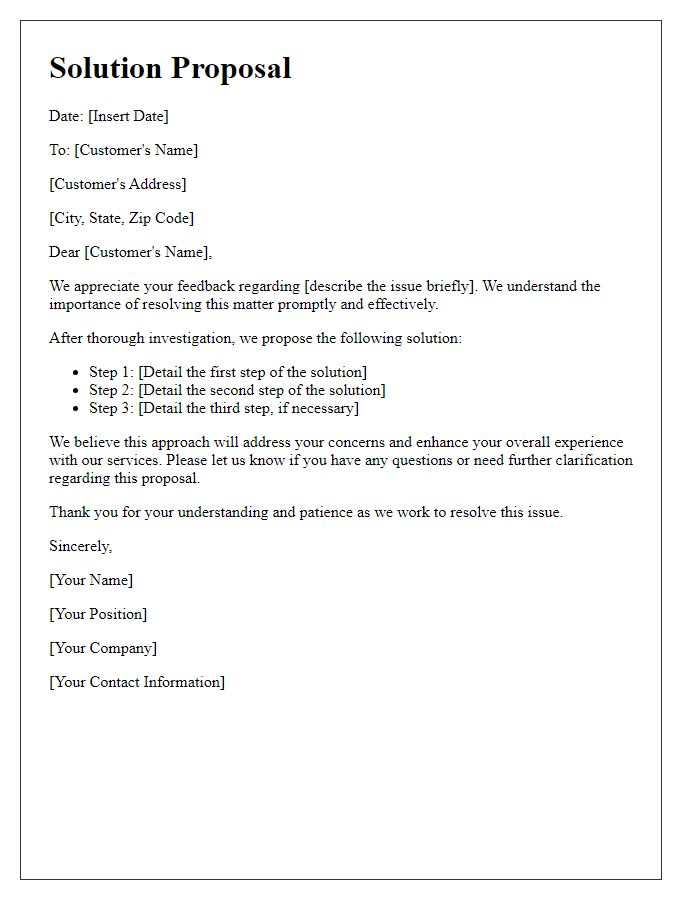
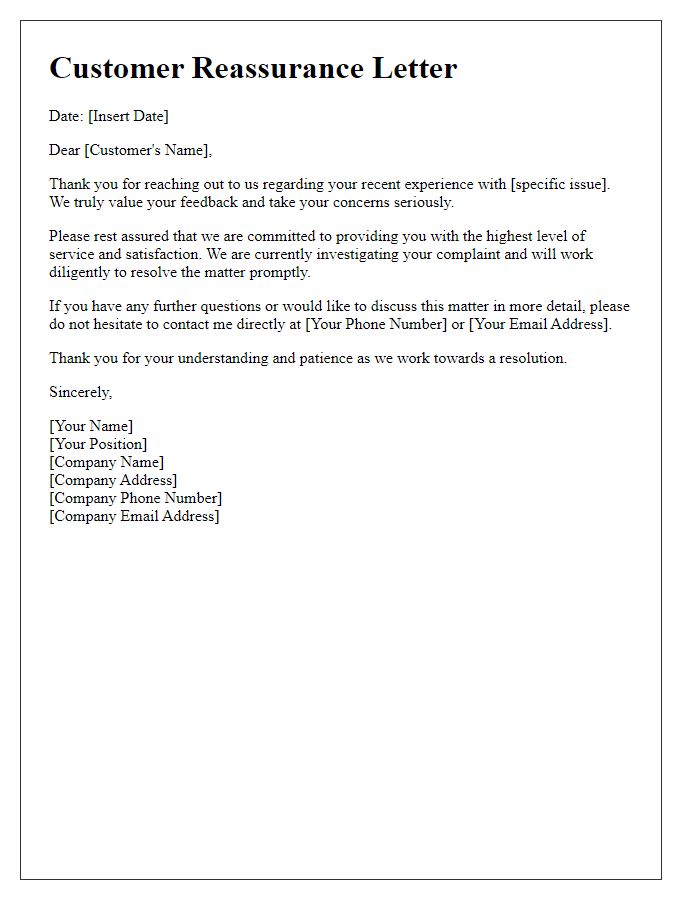
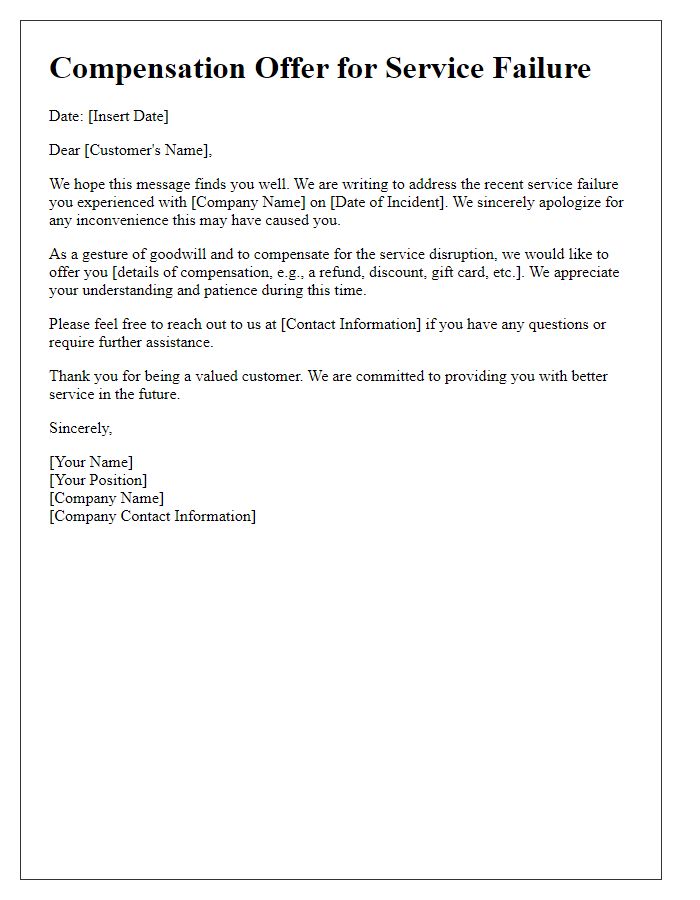
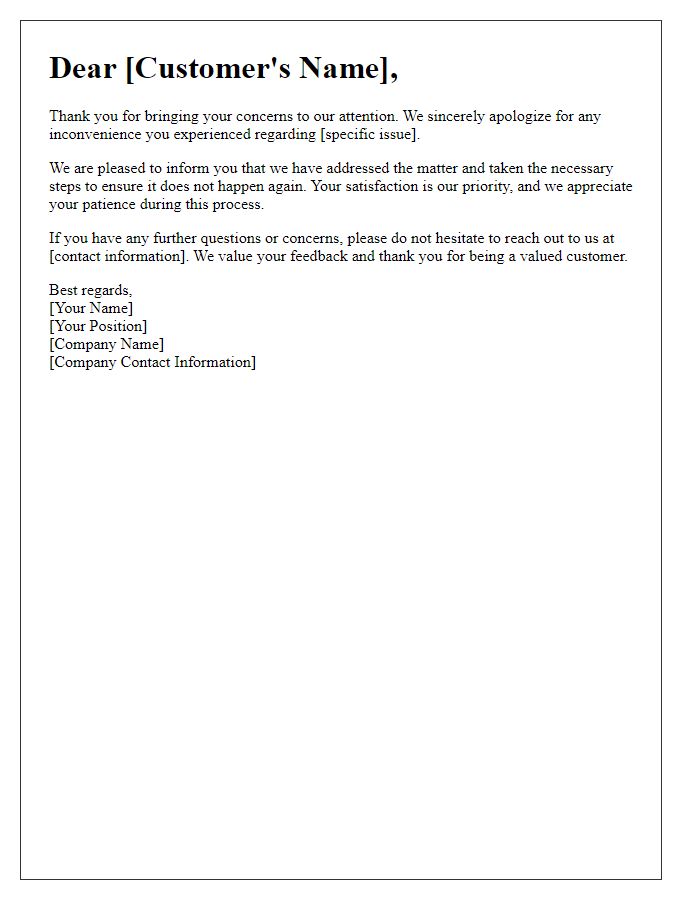
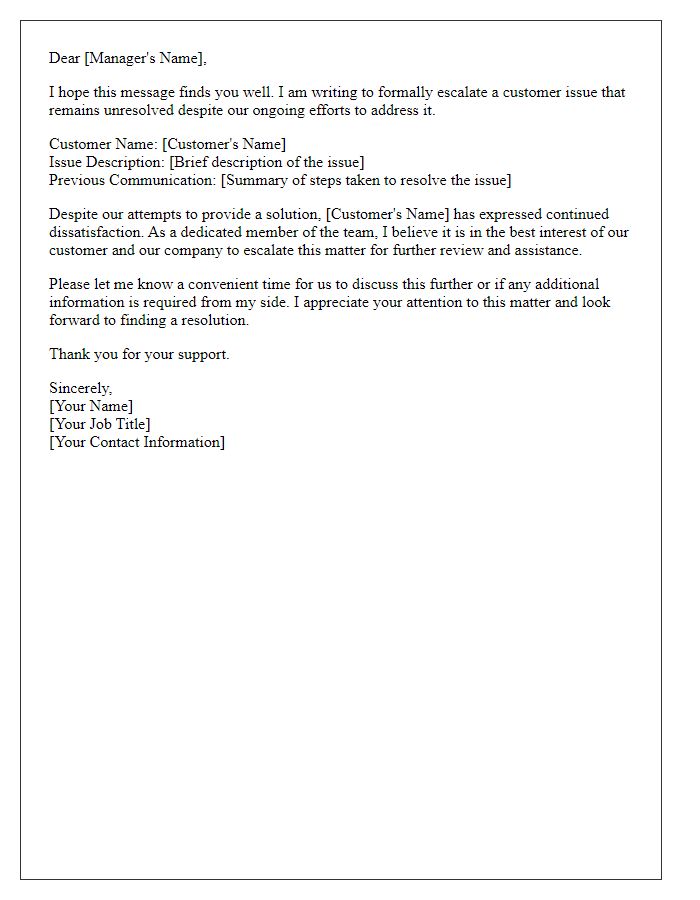
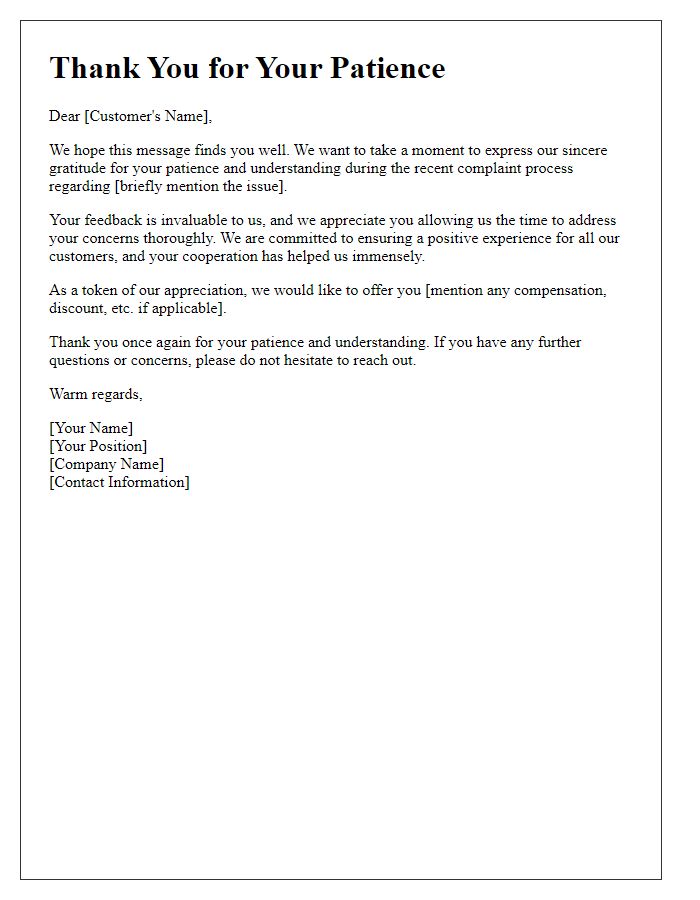
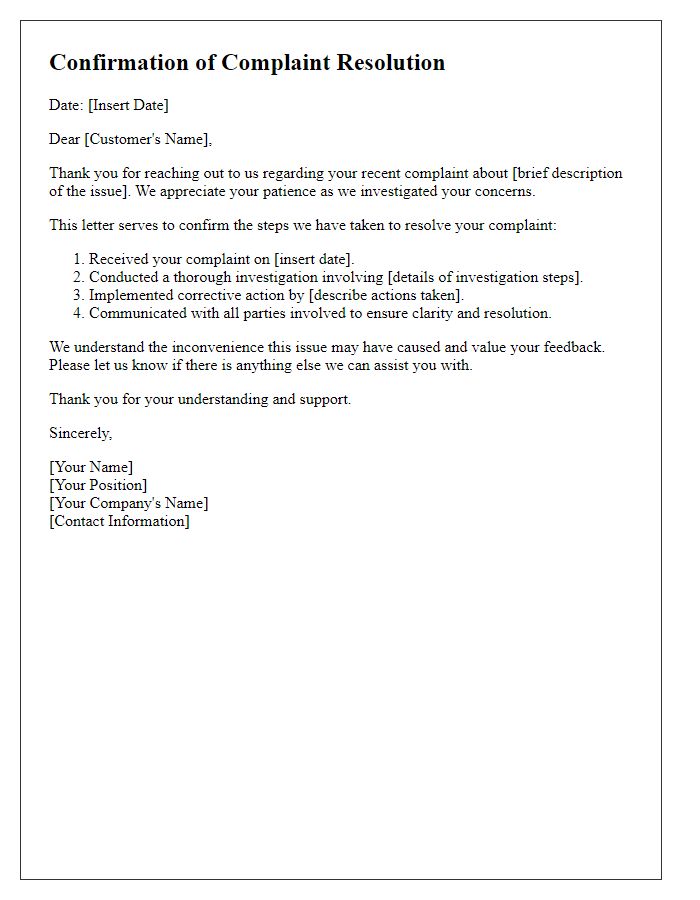





Comments